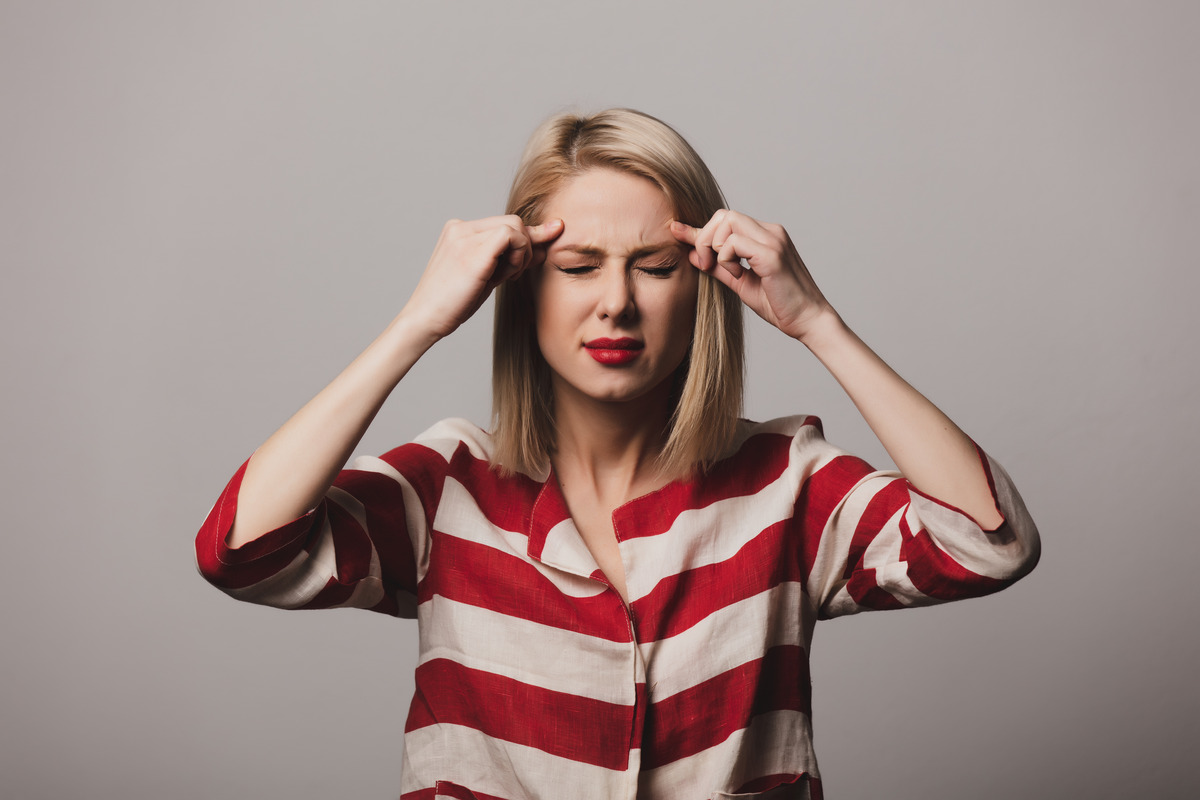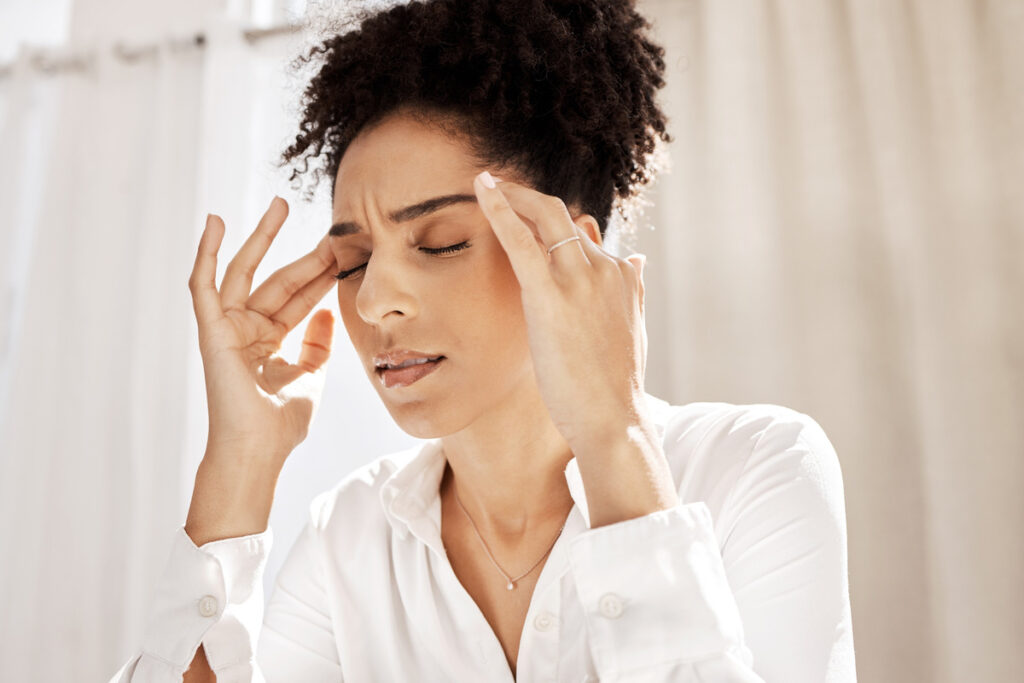Migraines affect more than 37 million people in the United States alone and over 120 million globally. The headaches are typically accompanied by nausea, vomiting, and/or photophobia (light sensitivity) and phonophobia (sound sensitivity).
Traditional treatments don’t always provide migraine relief and this leads many people who are affected to look for alternative options. The first and best treatment is always treating it at the primary level and this involves avoiding triggers. A retrospective study done in 2023 showed 76% of the patients reported triggers such as stress and skipped meals.
Non-cosmetic Botox treatment is the next best option, especially for people with recurrent migraines. One of our most popular treatments is Botox injections at GT Aesthetic.
The Burden of Migraines
What are Migraines?
WHO defines Migraine as a chronic neurologic disorder that’s composed of a primary episodic headache that usually lasts 4–72 hours.
Migraine symptoms include:
- Throbbing or pulsing pain, typically unilateral (on one side of the head).
- Nausea and vomiting.
- Sensitivity to light, sound, and sometimes smell.
- Visual disturbances, such as auras (warning stage that occurs before or during a migraine episode).
Impact on Individuals
- Migraine statistics: According to the Migraine Research Foundation, one billion people are living with migraine worldwide with 39 million of those people living in the United States.
- Migraine demographics: Migraine global prevalence is 20.7% in women and 9.7% in men.
- Economic impact: Migraines cost American employers about $13 billion annually because of missed workdays and reduced productivity. 60% of the loss is directly due to missed workdays.
Understanding Triggers and Physiology
Migraine triggers
Common triggers for migraines include:
- Stress
- Hormonal changes
- Weather changes
- Changes in sleep patterns (excessive or insufficient)
- Emotion
- Odors
Migraine physiology
Migraines are caused by abnormal brain activity affecting nerve signals (mainly the Trigeminal nerve), chemicals, and blood vessels in the brain.
Migraine involves the trigeminal nerve becoming overactive and triggering inflammation in the meninges. This meningeal inflammation sensitizes the nerves that sense pain and results in headaches.
First, there is a disruption in brain activity (called cortical depression) then, the prolonged activation of the pain nerves in the trigeminal pathway leads to the actual headache pain. Cortical depression is thought to cause the aura that some people experience before a migraine.
Botox’s Evolution as a Medical Treatment
Botox history
1989: The first FDA approval
OnabotulinumtoxinA received FDA approval for therapeutic use and was rebranded as BOTOX®. It was used to treat conditions like strabismus (crossed eyes) and blepharospasm (uncontrollable blinking).
2002: The first cosmetic approval
The FDA approved BOTOX® Cosmetic as the first treatment of its kind for the temporary improvement of moderate to severe frown lines in adults.
Botulinum toxin is the only neurotoxin approved by the FDA for three treatment areas:
- Moderate to severe forehead lines.
- Frown lines.
- Crow’s feet.
BOTOX® Cosmetic is the #1 selling treatment of its kind and has sold approximately 100 million vials in the United States alone since 2002.
Mechanism of Action: Botox in Migraine Prevention

How Botox Works
Botox mechanism involves neurotransmitter inhibition. It works by blocking the release of neurotransmitters that carry pain signals from the brain thus preventing the activation of nerve signals that trigger migraine pain when injected into the head and neck.
Supporting Research
OnabotulinumtoxinA is the most studied substance for the prophylactic treatment of chronic migraine. A peer-reviewed article titled, “Botulinum toxin in the management of chronic migraine” shows that it significantly reduces the number of monthly headache days and improves the quality of life for patients.
In a study of Australians with chronic migraine (CM) who did not achieve adequate results with at least three previous preventive migraine medications, Botox treatment resulted in substantial reductions in migraine days, severe headache days, HIT-6 scores (a tool that measures how much headaches affect a person’s ability to function in their daily life), and missed work or study days.
Nearly 3/4 of patients saw their number of monthly headache days cut by at least half within the first six months. The benefits were sustained, and further improvements were noted after the first two treatment cycles.
A study of patients in the UK receiving Botox injections showed an increase in headache-free days over a two-year period compared to pre-treatment levels.
The study found that 22.6% of the patients achieved a:
- ≥50% reduction in headache days
- 39.1% in migraine days
- 38.8% had a ≥2-fold increase in headache-free days
Real-World Effectiveness
The following are Botox testimonials and details about patient outcomes retrieved from realself:
Patient 1
A 35-year-old from San Francisco experienced severe daily migraines for three years but initial treatments with ibuprofen and Sumatriptan were ineffective. They started Botox injections after a referral to a neurologist.
The first round reduced migraines to every other day and lessened their severity and then subsequent treatments further improved his condition. The neurologist also recommended vitamin supplements and now his symptoms are more manageable.
Patient 2
A female athlete suffered from chronic neck tension due to repetitive sports activities but traditional treatments like massages provided little relief. She noticed significant improvement within a week after starting Botox and her neck tension was completely alleviated over 18 months with 3-4 Botox treatments.
She experienced issues with balance post-treatment and suggested that anyone receiving Botox should stop and get their postures right before they lift something heavy because their balance might be off a bit too.
Comparing Treatments: Botox vs. Alternatives

| Treatment | Mechanism | Effectiveness | Side Effects | Duration |
| Botox | Blocks pain neurotransmitters | 47% had ≥50% reduction in headache days | Minor, localized | 3-6 months per treatment |
| Triptans (e.g., Sumatriptan) | Constricts blood vessels, blocks pain pathways | Effective in 60-70% of patients | Nausea, dizziness, chest pain | Acute treatment only |
| Beta-blockers (e.g., Propranolol) | Reduces blood vessel dilation | 50-80% reduction in attacks | Fatigue, dizziness | Daily medication |
| Nerve blocks | Numbs nerves involved in migraines | Varies, up to 83% report improvement | Pain at injection site | Weeks to months |
| Lifestyle changes (diet, sleep) | Avoids triggers | Highly variable | None | Ongoing |
The Treatment Experience with Botox
Treatment Procedure
- The treatment area is cleaned, and a topical anesthetic may be applied.
- The specialist administers injections in specific sites on the head and neck.
A Botox procedure typically takes about 15-30 minutes.
What to Expect
- Slight discomfort or a pinching sensation at the injection sites during the procedure.
- Common side effects include:
- Mild pain
- Swelling at the injection sites.
- Most patients can resume normal activities immediately.
- Noticeable improvements in migraine frequency and severity appear within a few days to weeks.
Ideal Candidates for Botox
Botox for migraines is suitable for:
- People experiencing chronic migraines (15 or more headache days per month).
- Those who have not found relief with traditional migraine medications.
- Patients without contraindications such as allergies to Botox.
Starting Your Journey at GT Aesthetic
Consulting with Specialists
- Keep a migraine diary noting frequency, duration, and triggers.
- List all previous and current treatments.
- Bring medical records and questions.
Our specialists will:
- Review your history.
- Explain how Botox can help your specific case.
- Discuss potential outcomes and side effects.
Booking Your Appointment
To book an appointment at GT Aesthetic:
You can call us at 412-922-6828
or
- Visit the website
- Fill out the form and submit it.
- We will send a confirmation email with details about the appointment.
Conclusion
One of our most popular treatments is Botox injections at GT Aesthetic. Non-cosmetic Botox treatment is an FDA-approved treatment that helps prevent migraines and reduce how often they happen and how severe they are.
The specialists at GT Aesthetic understand how Botox can transform migraine treatment and can evaluate if Botox is the right option for you to get fewer migraines and take back control of your life.
Contact us to learn more about using Botox to prevent your migraines.
FAQ Related To Botox for Migraines
What should I expect during a Botox treatment session for migraines?
A medical professional will inject Botox into multiple areas around your head and neck. The procedure takes about 15-30 minutes. You can resume normal activities immediately.
What are the potential side effects of using Botox for migraines?
- Neck pain (reported in 9% of patients in clinical trials).
- Headache (5% of patients).
- Eyelid drooping (3% of patients).
- Muscle weakness (2% of patients).
- Pain at the injection site (1% of patients).
How long does it typically take to see results from Botox treatments for migraines?
It may take four weeks or more to notice a reduction in migraine frequency.
Many patients report a reduction in migraine frequency starting about 4 weeks after the first treatment.
Full benefits are typically seen after 2-3 treatment cycles (6-9 months from the first treatment).
How frequently should I receive Botox injections to prevent migraines?
Botox is injected every 12 weeks.
Is Botox for migraines covered by health insurance?
Many insurance plans cover Botox for chronic migraines if you have 15 or more headache days per month and other treatments haven’t worked.
How does Botox compare to other migraine prevention medications?
| Treatment | Mechanism | Effectiveness | Side Effects | Duration |
| Botox | Blocks pain neurotransmitters | 47% had ≥50% reduction in headache days | Minor, localized | 3-6 months per treatment |
| Triptans (e.g., Sumatriptan) | Constricts blood vessels, blocks pain pathways | Effective in 60-70% of patients | Nausea, dizziness, chest pain | Acute treatment only |
| Beta-blockers (e.g., Propranolol) | Reduces blood vessel dilation | 50-80% reduction in attacks | Fatigue, dizziness | Daily medication |
| Nerve blocks | Numbs nerves involved in migraines | Varies, up to 83% report improvement | Pain at injection site | Weeks to months |
| Lifestyle changes (diet, sleep) | Avoids triggers | Highly variable | None | Ongoing |

